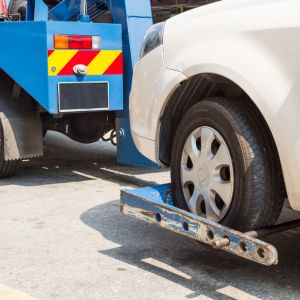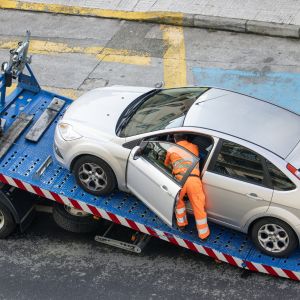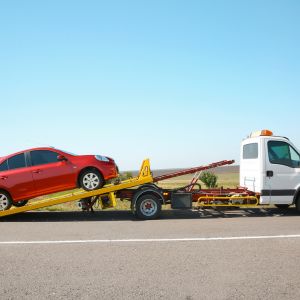Towing a car without proper equipment and training can be dangerous and potentially lead to serious consequences. Improperly secured tow ropes or chains can come loose or break during transit, causing the vehicle being towed to become unstable and potentially collide with other vehicles on the road.
Additionally, towing a car without the proper equipment, drivers may not be aware of the weight limitations and other factors that can affect the stability and handling of both the towing vehicle and the vehicle being towed. This can result in difficulties navigating turns, accelerating, and braking, leading to accidents and potentially causing harm to the drivers and other road users.
Furthermore, towing a car without the proper equipment and training can also cause damage to the vehicles being towed, and can result in fines and legal penalties. It is important to use proper equipment, follow proper towing procedures, and seek professional training to ensure the safe and successful towing of a vehicle. Now, we will explore the potential dangers of towing a car without the proper equipment and training.
Understanding the Risks of towing a car without the proper equipment
1. Strain on Vehicle Components
Towing a car without the proper equipment can put immense strain on both the towing vehicle and the one being towed. This strain can lead to damage to essential components such as the transmission, brakes, and suspension systems. To prevent this, it’s crucial to invest in the right towing tools.
- Towing Hitch: A towing hitch is an essential tool that ensures a secure connection between the towing vehicle and the one being towed.
- Trailer Brakes: Trailer brakes help distribute the stopping force between the towing and towed vehicles, reducing the strain on both.
2. Loss of Control
Improper towing a car without the proper equipment lead to a loss of control over both vehicles, especially during sudden stops or turns. This can result in accidents and collisions, putting both the vehicles and their occupants at risk.
- Weight Distribution Hitch: This tool helps distribute the weight evenly across both vehicles, improving stability and control during towing.
- Towing Mirrors: Proper visibility is crucial during towing. Towing mirrors provide a wider field of view, allowing the driver to make safer maneuvers.
What is an important safety device when towing?

When car towing, it’s important to use a safety device such as a tow chain or tow rope to ensure the safety of you and other drivers on the road. A tow chain or tow rope is a strong cable that is used to connect the towing vehicle to the vehicle being towed. It helps to prevent the vehicle from becoming detached from the towing vehicle during transit, which could cause a dangerous situation on the road.
When using a tow chain or tow rope, it’s important to follow the manufacturer’s instructions and guidelines for proper use. The chain or rope should be properly attached to both vehicles, with the hooks or other attachments securely fastened. The chain or rope should also be tensioned properly, so that it’s not too loose or too tight.
In addition to a tow chain or rope, other safety devices to consider when towing include safety chains, lighting systems, and brake systems. Safety chains are a secondary connection between the vehicles that provide additional stability and security. Lighting systems, such as marker lights or tail lights, help to make the tow vehicle and the vehicle being towed more visible to other drivers. Brake systems are also important, as they help to ensure that the vehicle being towed can stop safely in an emergency situation.
Overall, it’s important to take the necessary precautions and use the proper safety devices when towing to ensure the safety of everyone on the road.
Towing of a vehicle

The process of towing a vehicle involves the following steps:
Preparation: Make sure you have the necessary equipment, such as a tow rope or chains, and a working vehicle with enough power to tow the other vehicle.
Positioning: Position the towing vehicle behind the vehicle to be towed, making sure the vehicles are lined up straight and the tow rope or chains are secure.
Attaching the tow rope or chains: Attach one end of the tow rope or chains to the towing vehicle and the other end to the vehicle being towed. Make sure the connection is secure and there is enough slack in the rope or chains to allow for some movement.
Communication: Both drivers should communicate to ensure they are ready to start towing.
Towing: The towing vehicle should start slowly and gradually pick up speed. The vehicle being towed should follow behind and maintain a steady pace.
Stopping: If either vehicle needs to stop, the driver should communicate and both vehicles should stop at the same time.
Disconnecting: Once the vehicle has reached its destination, the tow rope or chains should be disconnected and both vehicles should be inspected to make sure there is no damage.
It is important to follow all traffic laws and regulations, and to use caution when towing a vehicle.
Frequently Asked Questions
Q1. What is an important safety device when towing?
Ans: A tow hitch or a ball and socket system is an important safety device when towing. The hitch or ball and socket system is the mechanism that attaches the trailer to the towing vehicle.
Q2. What does it mean to tow a vehicle?

Ans: To tow a vehicle means to pull a vehicle behind a larger vehicle, such as a truck or an SUV, using a trailer or a tow bar. The purpose of towing a vehicle can be for transportation or for emergency recovery.
Q3. Why is it not advisable to tow an automatic transmission?
Ans: Towing an automatic transmission vehicle with the drive wheels on the ground can cause damage to the transmission and other drivetrain components. Automatic transmissions are designed to operate with the engine and transmission in a specific relationship, and towing with the drive wheels on the ground can put excessive stress on the transmission and other components.
Q4. What should you not do when towing?
Ans: When towing, it is important to avoid making sudden stops, sharp turns, or sudden acceleration or deceleration, as these can cause the trailer to sway or jackknife. Additionally, it is important to avoid overloading the trailer and towing vehicle, and to ensure that the load is properly balanced and secured.
Q5. What do I need to know before towing?
Ans: Before towing, it is important to know the weight and size of the load, the towing capacity of the towing vehicle, and the regulations regarding towing in your area. It is also important to have the appropriate hitch and towing equipment and to make sure that the towing vehicle and trailer are in good working order.
Q6. Do you need the training to tow a trailer?
Ans: While you do not need formal training to tow a trailer, it is important to have a basic understanding of how to safely load and secure the load, how to maneuver the towing vehicle and trailer, and the regulations regarding towing in your area. Additionally, it is a good idea to get some practice towing before attempting to tow a heavy or large trailer.
Conclusion
Towing a car without the proper equipment and training is a risky endeavor that can lead to serious accidents and damage. By investing in the right tools and understanding their importance, you can ensure a safe and smooth towing experience.
While towing a car without the proper equipment and training might seem like a cost-effective solution, it can quickly turn into a costly and dangerous mistake. The safety of all parties involved, including other road users, should be your top priority. When in doubt, seek professional assistance from reputable towing companies to ensure a safe and hassle-free towing experience.

